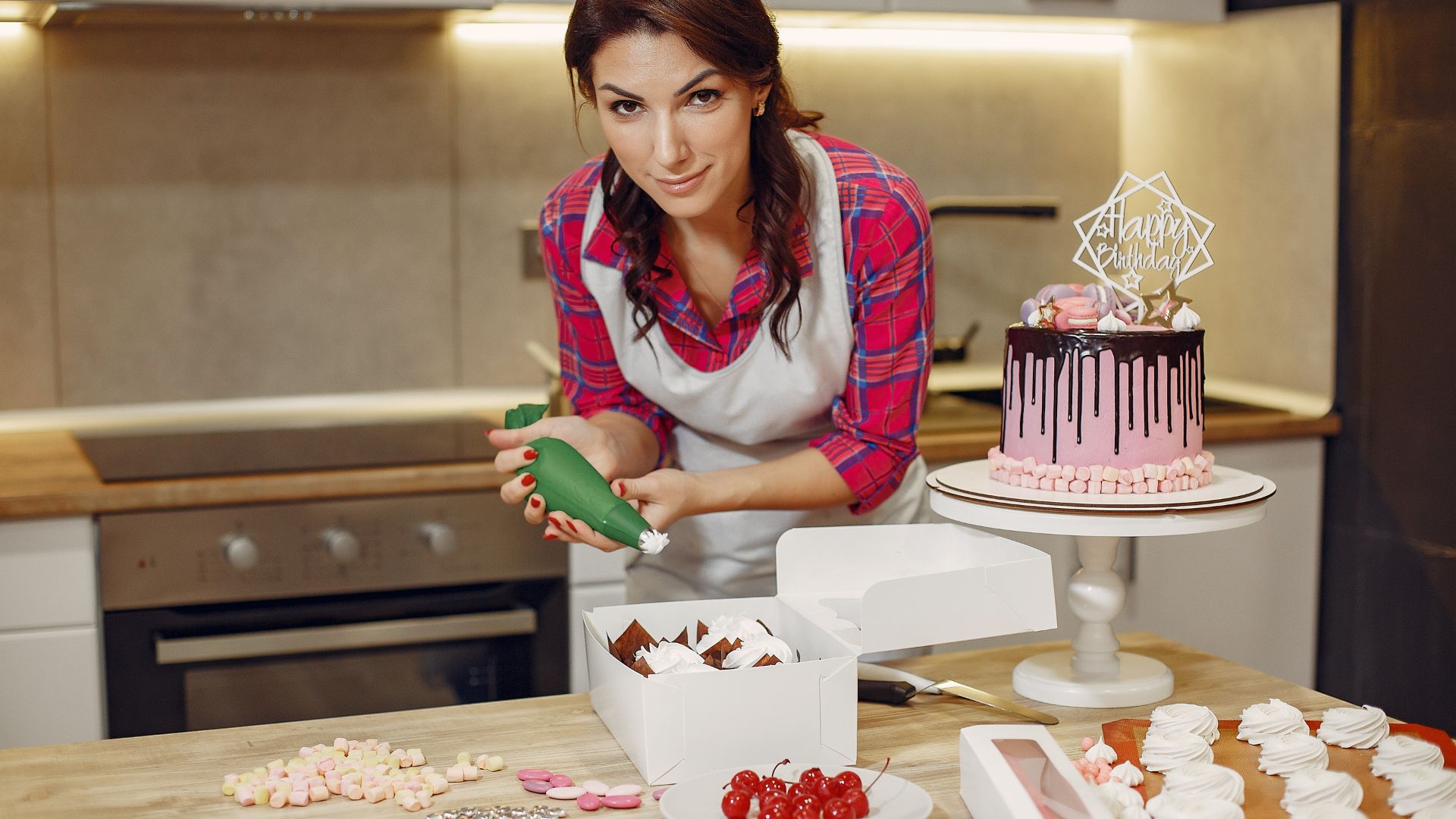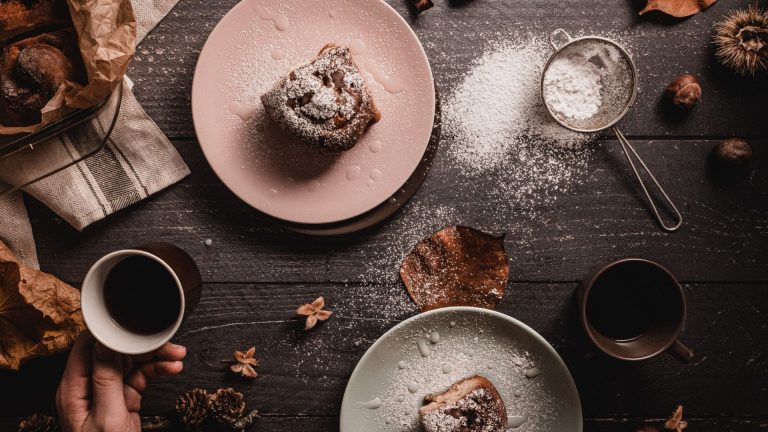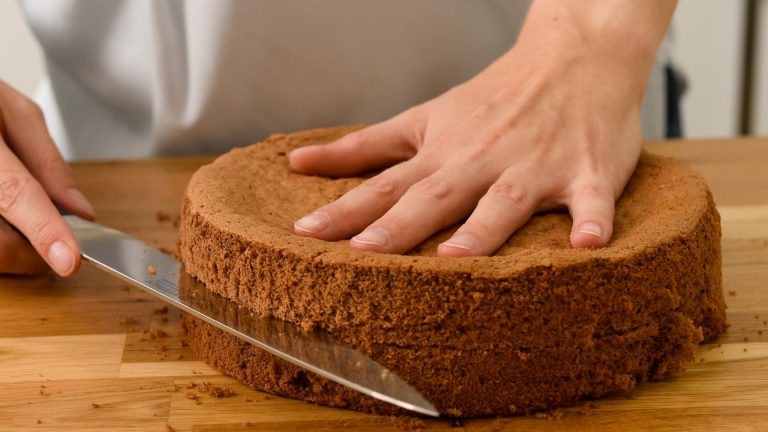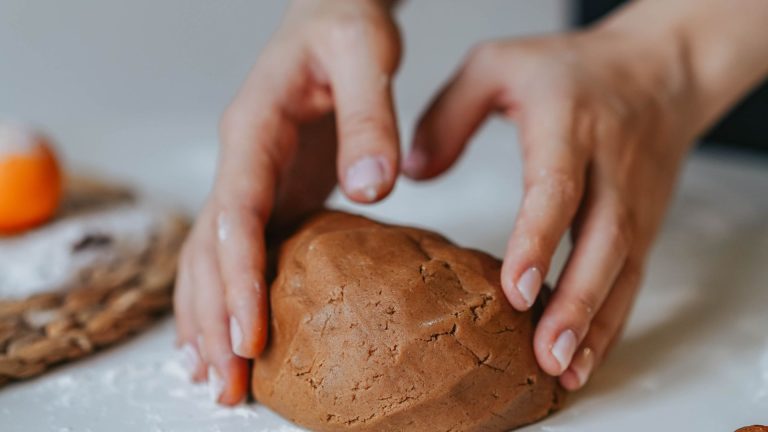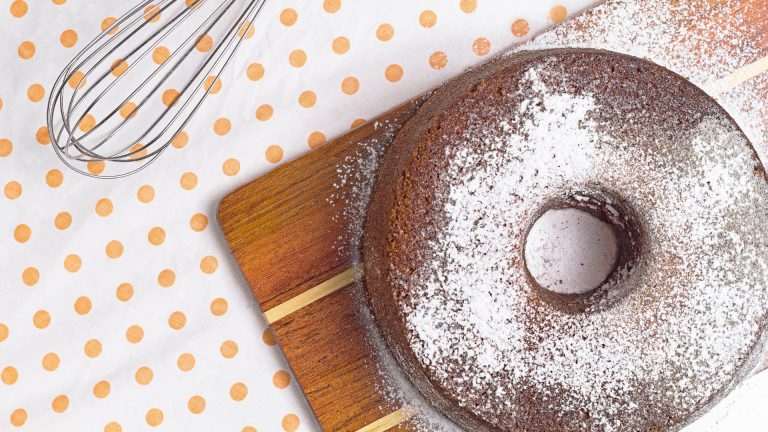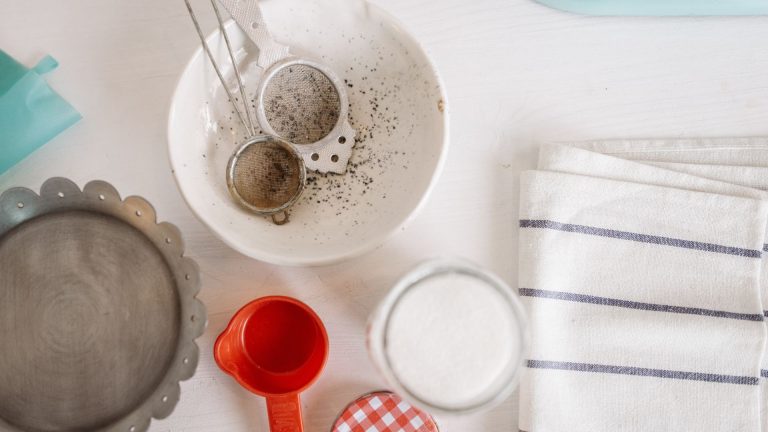SCL: Scaling role in cake making Explained
Table of Contents
ToggleWhat is SCL (Scaling)?
Scaling, in the world of baking, refers to the process of adjusting the ingredient quantities based on the size of the cake you want to bake. Whether you’re scaling up a recipe to make a larger cake or scaling down for a smaller one, understanding this concept is crucial to ensure your cakes turn out just right. >> Check out the right cake Scaling tools and icing ingredients that you need here
The Role of Scaling in Cake Making
Why Scaling Matters
Scaling is not just about changing numbers; it’s about maintaining the balance between ingredients. When you scale up a recipe, you need to adjust every ingredient proportionally to keep the flavor and texture consistent. Similarly, scaling down requires careful adjustments to avoid an imbalance that could ruin your cake.>> Check out the right cake Scaling tools and icing ingredients that you need here

How to Scale a cake Recipe
- Determine the Size of the Cake: Start by figuring out the size of the cake you want to make. This includes the pan size and the desired height.>> Check out the right cake Scaling tools and icing ingredients that you need here
- Calculate Ingredient Quantities: Use the original recipe’s quantities as a baseline. For example, if a recipe makes a 9-inch cake and you want to make a 12-inch cake, you’ll need to scale up all the ingredients accordingly. There are various scaling calculators online that can help with this, or you can use a simple formula based on the area of the cake pans.
- Adjust Baking Time: Larger cakes often require a longer baking time. Keep an eye on your cake and use a toothpick to check for doneness.
- Test and Adjust: Scaling a recipe is not always perfect on the first try. It might take a bit of experimentation to get everything just right. Keep notes on what works and what doesn’t for future reference.>> Check out the right cake Scaling tools and icing ingredients that you need here
Tips for Successful cake Scaling
- Precision is Key: Measure ingredients carefully. Even small discrepancies can affect the final outcome.
- Use a Calculator: There are plenty of online tools that can help you scale recipes accurately.
- Keep Notes: Document your scaling process so you can replicate successful recipes or adjust if needed.
Scaling is a crucial skill in cake making that ensures you can adjust recipes to fit different sizes and needs without compromising on taste or texture. With a bit of practice, scaling will become a seamless part of your baking process.>> Check out the right cake Scaling tools and icing ingredients that you need here
Common Scaling Mistakes in Cake Making
Scaling recipes can be a bit tricky, especially if you’re new to baking or experimenting with different cake sizes. Mistakes in scaling can lead to cakes that are either too dry, too dense, or simply not as delicious as you intended. Here are some common scaling mistakes to watch out for and tips on how to avoid them.
1. Ignoring Ingredient Ratios
One of the biggest mistakes when scaling a recipe is not adjusting all ingredients proportionally. If you scale up a cake recipe, you need to scale every ingredient, including leaveners like baking powder or baking soda. Failing to do so can result in cakes that are too dense or that don’t rise properly.
Tip: Use a scaling calculator to ensure you’re adjusting all ingredients proportionally. Double-check that your leavening agents are scaled correctly for larger or smaller amounts of batter.>> Check out the right cake Scaling tools and icing ingredients that you need here
2. Neglecting Baking Time Adjustments
When you scale a recipe, particularly to a larger pan, baking time will change. A larger cake may need more time to bake through, while a smaller one might bake faster. Overlooking this can lead to undercooked centers or overbaked edges.
Tip: Monitor your cake as it bakes and use a toothpick to check for doneness. Start checking about 10 minutes before the original recipe’s baking time ends, and adjust as needed.
3. Misjudging Pan Size
Not all pans are created equal, and using the wrong size can lead to uneven baking or incorrect scaling. For instance, a recipe meant for a 9-inch round pan scaled up to a 12-inch pan requires different handling than simply increasing ingredient quantities.
Tip: Always use the correct pan size for your scaled recipe. If you’re scaling up significantly, you might need to adjust the pan shape or bake in multiple pans.>> Check out the right cake Scaling tools and icing ingredients that you need here
4. Overlooking Ingredient Weight
When scaling recipes, it’s crucial to consider the weight of ingredients rather than just volume. For example, a cup of flour can weigh differently depending on how it’s packed. This is especially important for dry ingredients.
Tip: Use a kitchen scale to measure ingredients by weight for more accurate scaling. This ensures that your proportions remain correct, especially for large batches.
5. Forgetting to Adjust Recipe Techniques
Sometimes scaling a recipe also means altering the mixing method or oven temperature. Larger batters might require longer mixing to ensure even distribution, or a lower oven temperature to prevent burning on the outside before the inside is cooked.
Tip: Pay attention to the texture of your batter and adjust mixing times or oven settings as necessary. Experiment and note what works best for different sizes and recipes.
6. Scaling Recipes with High Fat Content
Recipes that have a high fat content, like those using a lot of butter or oil, can be tricky to scale. Simply increasing the amount might not always yield the same results, as fat can affect texture and flavor significantly.
Tip: When scaling recipes with high fat content, adjust the amount carefully and consider how it might impact the cake’s texture. You may need to experiment to find the right balance.
Scaling recipes requires careful attention to detail and a bit of trial and error. By avoiding these common mistakes and following the tips provided, you can achieve great results and ensure that your cakes turn out perfectly every time. >> Check out the right cake Scaling tools and icing ingredients that you need here
Drilling Deeper: Comparing Scaling Techniques in Cake Making
Scaling a recipe can often seem straightforward, but there’s more to it than just adjusting ingredient quantities. Different methods of scaling can have varied impacts on the final product, and understanding these differences can help achieve consistent, high-quality results. Let’s drill deeper into comparing different scaling techniques and their effects on cake making.
1. Linear Scaling vs. Exponential Scaling
Linear Scaling:
Linear scaling is the most common method where ingredient quantities are adjusted proportionally based on the size of the cake. For instance, if you’re doubling a recipe, you double all the ingredients. This method assumes a direct relationship between the recipe size and the ingredient amounts.
- Pros: Simple and intuitive; works well for small to moderate changes in recipe size.
- Cons: May not account for changes in cooking time, texture, or flavor balance when scaling by large factors.
Exponential Scaling:
Exponential scaling, or more advanced scaling, takes into account the change in volume and surface area of the cake. For instance, when you double the diameter of a cake pan, you actually increase the volume exponentially, not just linearly. This method adjusts ingredient amounts based on the volume increase, considering both the surface area and height.
- Pros: More accurate for large changes in cake size; helps maintain texture and consistency.
- Cons: More complex and requires detailed calculations or advanced scaling tools.
Comparison: Linear scaling is easier to apply and sufficient for small changes, but exponential scaling provides better results for larger adjustments by accounting for changes in volume and surface area.
2. Scaling by Weight vs. Scaling by Volume
Scaling by Weight:
Scaling ingredients by weight (using a kitchen scale) ensures precision, especially for dry ingredients like flour, sugar, and fats. Weight measurements are more consistent and accurate compared to volume measurements.
- Pros: More precise; avoids discrepancies caused by variations in ingredient packing.
- Cons: Requires a scale and can be less intuitive for those used to volume measurements.
Scaling by Volume:
Scaling by volume (using measuring cups and spoons) is more familiar and convenient for many bakers. It involves measuring out ingredients in cups, tablespoons, etc.
- Pros: Easy and quick; no special equipment needed.
- Cons: Less accurate due to variations in ingredient density and packing.
Comparison: Scaling by weight provides greater accuracy and consistency, particularly for larger batches or more complex recipes. Volume scaling can work well for smaller changes but may lead to inaccuracies.>> Check out the right cake Scaling tools and icing ingredients that you need here
3. Adjusting Baking Times and Temperatures
Scaling Up:
When increasing the size of a cake, the batter takes longer to cook through. Additionally, a larger cake might require adjustments to oven temperature to ensure even baking.
- Pros: Ensures even cooking and avoids undercooked centers.
- Cons: Requires careful monitoring and adjustments.
Scaling Down:
For smaller cakes, baking times decrease, and there’s less need to worry about uneven cooking. However, smaller cakes might cook too quickly or overheat if not adjusted properly.
- Pros: Generally straightforward to adjust.
- Cons: Risk of overbaking or burning if time adjustments are not made.
Comparison: Both scaling up and down require careful adjustments to baking times and temperatures to ensure even baking. Larger cakes need more time and possibly a lower temperature, while smaller cakes need less time and may benefit from a slightly higher temperature.
4. Effect on Texture and Flavor
Scaling Up:
Larger cakes might have different texture and flavor profiles due to changes in the ingredient ratios and baking conditions. For instance, increasing fat or sugar may alter the cake’s density and sweetness.
- Pros: Allows for experimentation with new cake sizes and textures.
- Cons: Risk of imbalance in texture or flavor if not scaled carefully.
Scaling Down:
Reducing a recipe might lead to stronger flavors or denser textures if not adjusted properly. For example, a smaller cake might be denser if the ingredient ratios are not balanced correctly.
- Pros: Allows for smaller batch sizes and quick adjustments.
- Cons: Potential for flavor imbalance or density issues.
Comparison: Both scaling up and down require careful attention to maintain the intended texture and flavor. Larger cakes need balanced ingredient ratios to avoid density issues, while smaller cakes need adjustments to prevent overly intense flavors.>> Check out the right cake Scaling tools and icing ingredients that you need here
Comparison Table: Scaling Techniques in Cake Making
| Aspect | Linear Scaling | Exponential Scaling | Scaling by Weight | Scaling by Volume |
|---|---|---|---|---|
| Definition | Adjusts ingredient quantities proportionally based on size. | Adjusts based on volume and surface area changes. | Measures ingredients by weight for accuracy. | Measures ingredients by volume (cups, spoons, etc.). |
| Ease of Use | Simple and intuitive. | More complex, requires advanced calculations or tools. | Requires a kitchen scale, but accurate. | Common and familiar, no special equipment needed. |
| Accuracy | Sufficient for small changes. | More accurate for large size changes. | High accuracy, less variation. | Less accurate due to packing variations and density issues. |
| Baking Time Adjustment | May require manual adjustments based on pan size. | Better handles changes in baking time for large pans. | Direct impact on baking time is less obvious. | Easier to manage for smaller changes. |
| Pan Size Consideration | Adjusts ingredient quantities but not pan size. | Considers changes in pan size and adjusts accordingly. | Does not inherently account for pan size. | Must consider pan size for accurate results. |
| Impact on Texture and Flavor | May affect texture if scaled incorrectly. | Maintains texture and flavor balance better for large scales. | Maintains accuracy in ingredient ratios, affects texture. | May result in inconsistent texture or flavor. |
| Best Suited For | Small to moderate changes in recipe size. | Large adjustments in cake size or pan dimensions. | Precise recipes and consistent results. | Familiar and quick adjustments for home bakers. |
Key Notes and Considerations
1. Precision and Accuracy
- Linear Scaling: Works well for small changes, but may not account for significant differences in cake volume or surface area. Ideal for home bakers making minor adjustments.
- Exponential Scaling: Provides a more accurate adjustment for larger changes in cake size by considering volume changes. Essential for professional baking or when working with large pans.
2. Ingredient Measurement
- Scaling by Weight: Offers the most accurate measurements, reducing variability and ensuring consistent results. This method is particularly important for ingredients like flour and sugar where precision affects texture and structure.
- Scaling by Volume: Easier for casual bakers but less reliable due to inconsistencies in how ingredients are packed into measuring cups. Best used for simple, everyday baking.
3. Baking Time and Temperature Adjustments
- Scaling Up: Larger cakes often need more baking time and might require a lower temperature to bake evenly. It’s crucial to monitor the cake closely to avoid overcooking.
- Scaling Down: Smaller cakes usually bake faster and might need higher temperatures to avoid underbaking. Adjustments should be made to ensure proper doneness.
4. Texture and Flavor
- Linear Scaling: Changes in ingredient proportions can lead to imbalances in texture or flavor. Adjustments may be needed to maintain the original recipe’s characteristics.
- Exponential Scaling: Better at preserving texture and flavor, especially for significant increases in cake size. It helps to maintain the balance of ingredients relative to the pan size.
5. Practical Application
- Linear Scaling: Suitable for quick adjustments and simple recipes. Ideal for home bakers who need to modify recipes for slightly larger or smaller cakes.
- Exponential Scaling: Recommended for scaling up recipes significantly or for professional use where accuracy and consistency are critical.
Understanding these key notes and considerations can help you make informed decisions about scaling your cake recipes, ensuring that your baked goods turn out just as delicious as you intended.>> Check out the right cake Scaling tools and icing ingredients that you need here
FAQs on Scaling in Cake Making
1. What is the difference between linear scaling and exponential scaling?
Answer: Linear scaling involves adjusting ingredient quantities proportionally based on the size change of the cake. This is straightforward but may not account for significant changes in volume or surface area. Exponential scaling, on the other hand, considers the changes in volume and surface area, making it more accurate for large adjustments. This method helps maintain the balance of texture and flavor in larger or smaller cakes.
2. How do I adjust baking time when scaling a recipe?
Answer: When scaling up a recipe, a larger cake will generally need more baking time. Start checking for doneness about 10 minutes before the original recipe’s suggested baking time, and use a toothpick to test if the cake is done. For smaller cakes, reduce the baking time and keep an eye on the cake to prevent overbaking. Adjustments to the oven temperature may also be necessary to ensure even baking.
3. Is it better to scale recipes by weight or volume?
Answer: Scaling recipes by weight is generally more accurate than by volume. Weight measurements provide consistency and reduce variations caused by how ingredients are packed into measuring cups. Volume measurements are less precise and can lead to inconsistencies, especially with dry ingredients like flour and sugar.
4. Can I use a standard recipe scaling calculator for any recipe?
Answer: Most scaling calculators work well for basic recipes but may not account for all nuances, especially for recipes with complex ingredient interactions. For large or intricate adjustments, it’s a good idea to review the scaled recipe carefully and consider doing a test bake to ensure the results are as expected.
5. How can I ensure consistent texture and flavor when scaling a recipe?
Answer: To maintain texture and flavor, use exponential scaling for large size changes to account for changes in volume and surface area. Ensure that all ingredients are scaled proportionally, and adjust baking times and temperatures accordingly. For accurate results, consider measuring ingredients by weight and monitoring your cake closely during baking.
6. What should I do if my scaled cake turns out differently than expected?
Answer: If a scaled cake doesn’t turn out as expected, review the scaling process to ensure that all ingredients and adjustments were made correctly. Check for potential issues such as inaccurate measurements or incorrect baking times. Keep notes on what went wrong and make adjustments for future baking. Sometimes, it takes a few tries to perfect scaled recipes.
7. Can I scale recipes for different types of pans?
Answer: Yes, but it requires careful adjustment. When scaling recipes, consider the shape and size of the pan, as well as the baking time. Different pans affect how heat is distributed, which can impact baking time and the final texture of the cake. Use the correct pan size for the scaled recipe and adjust baking times as needed.>> Check out the right cake Scaling tools and icing ingredients that you need here
Final Words
Scaling recipes in cake making is a valuable skill that allows you to adjust your baked goods to meet different needs and occasions. Whether you’re baking a grand celebration cake or a small treat, understanding the principles of scaling can help ensure your cakes come out perfectly every time. By paying attention to ingredient ratios, baking times, and pan sizes, you can avoid common pitfalls and achieve consistent, delicious results. With a bit of practice and careful adjustment, scaling recipes will become a seamless part of your baking routine. Happy baking, and enjoy the process of creating cakes that are just right for any occasion.

Hi!
I’m Mike, the creator of Forum Foodies. In my own personal experience, understanding ingredients is key to great cooking.
Forum Foodies offers guides on various ingredients, from staples to exotic finds. Join our community, share your experiences, and learn from fellow food lovers.
Have questions or suggestions? Email me at info@forumfoodies.com. Let’s embark on this delicious adventure together.
Happy cooking.
Mike/
Related Posts
- BRU: Bruising Role in Cake Making Explained
When it comes to baking, it’s easy to get caught up in the complexities of…
- TMP: Tempering Role in Cake Making Explained
In this topic, I’m going to talk about tempering, a technique that’s often overlooked but…
- FRY: Frying Role in Cake Making Explained
In this topic, I'm going to talk about a fascinating technique in cake making: frying.…
- PST: Pastry Role in Cake Making Explained
When it comes to baking, pastries are often thought of as their own special category,…
- SCR - Scoring Role in Cake Making Explained
When it comes to cake making, every detail matters, from the ingredients you use to…
- STB - Stabilizing Role in Cake Making Explained
When diving into the world of cake making, you might come across the term "STB…
- FDR: Folding role in cake making Explained
When it comes to baking, especially making cakes, there’s a lot more that goes into…
- SHT: Shortening Role in Cake Making Explained
When it comes to baking, especially cake making, there are countless ingredients that can influence…
- SLF: Slaving Role in Cake Making Explained
In this topic, I’m going to dive into SLF – Slaving, and how it plays…
- MAC: Macerating Role in Cake Making Explained
In this topic, I’m going to talk about macerating and its role in cake making,…
- FRM: Fermenting Role in Cake Making Explained
In this topic, I’m going to talk about fermenting, especially how it plays a role…
- SCR - Scraping Role in Cake Making Explained
In this topic, I’m going to talk about SCR, or Scraping, in cake making. From…
- STF - Stuffing Its Role in Cake Making Explained
In this topic, I'm going to talk about stuffing, or STF, and its role in…
- PWT - Powdering Role in Cake Making Explained
In this topic, I’ll talk about PWT – Powdering and its essential role in cake…
- WTR: Water Bath Role in Cake Making Explained
In this topic, I'm going to talk about the water bath method, specifically in the…

